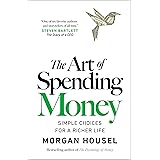Unlock the Secret to Creating Character Arcs That Captivate and Transform Your Story Forever
Ever wonder why some characters in stories stick with you long after the last page is turned — while others just fade away like yesterday’s weather? That unforgettable spark usually boils down to one thing: genuine character growth. It’s easy to say a character needs to change, but showing that transformation without drowning readers in a clunky, “here’s what I learned” monologue — well, that’s where the real craft lies. After churning out eight books and devouring hundreds more, I’ve learned that character change is less a sudden epiphany and more a gritty, sometimes messy journey through resistance, mistakes, and struggle. If you’ve ever wondered how to capture that elusive evolution authentically — no spoilers, just smart storytelling — stick around. Using my own urban fantasy thriller, Ghost in the Attic, as a launchpad, I’m sharing six step-by-step techniques to map out your character’s arc with subtlety and punch. Ready to haunt your readers with a character they’ll root for? Let’s dive in.
LEARN MORE
Six steps to show character growth throughout your story
Here’s something I learned after writing eight books and reading hundreds. All good stories, regardless of genre, share one thing in common: the character needs to change.
Easy to say. Not so easy to do.
Because real change, just like in life, doesn’t happen overnight. It happens through struggle, through resistance, and often, through mistakes. It also doesn’t happen overnight, it’s a process.
But how do you actually write that? How do you show that a character has changed without spelling it out in a final chapter monologue?
I’m a fantasy writer and I’m currently polishing the fourth draft of my WIP, Ghost in the Attic, an urban fantasy thriller. And because it’s so fresh in my mind, I’ll use my protagonist’s character arc to illustrate the techniques you can employ to show your character’s growth throughout the story.
Step One: Start with the Ghost
I don’t mean a literal ghost, and despite the title of my work in progress, there’s no actual ghost.
A “ghost” in storytelling is a past trauma or defining event that haunts your protagonist and shapes how they see the world. Now, this can happen on the page, at the beginning of the story, or it can be something from the past. In Story Genius, Lisa Cron (literary agent and story consultant) labels the ghost “The Origin Scene,” whereas others call the initial trauma a “wound.” Call it whatever you like, but I stuck to “ghost” because it haunts the protagonist.
For instance, in my WIP Ghost in the Attic, my protagonist, Angela, wants to become a detective to solve her father’s murder that took place years ago and remained unsolved by the police. That’s her ghost. It’s the reason she pushed herself to win a scholarship at the Bow and Quill Academy, where the story begins. It’s why she believes justice isn’t handed out — it has to be taken. Think of your character’s ghost as the moment that broke their trust in the world. It doesn’t have to be dramatic. But it has to leave a mark. What kind of trauma haunts your protagonist?



















